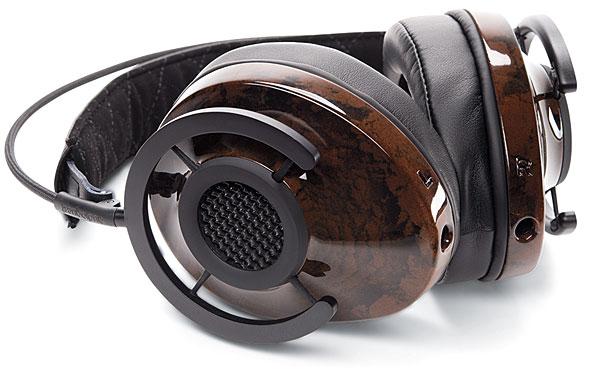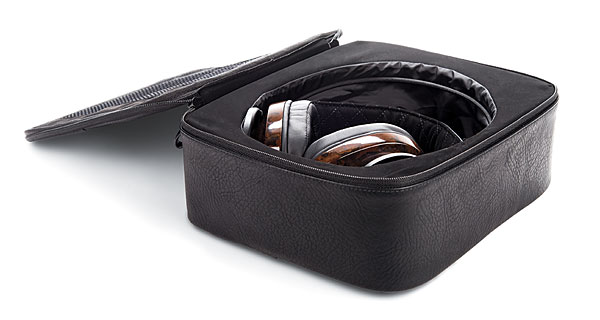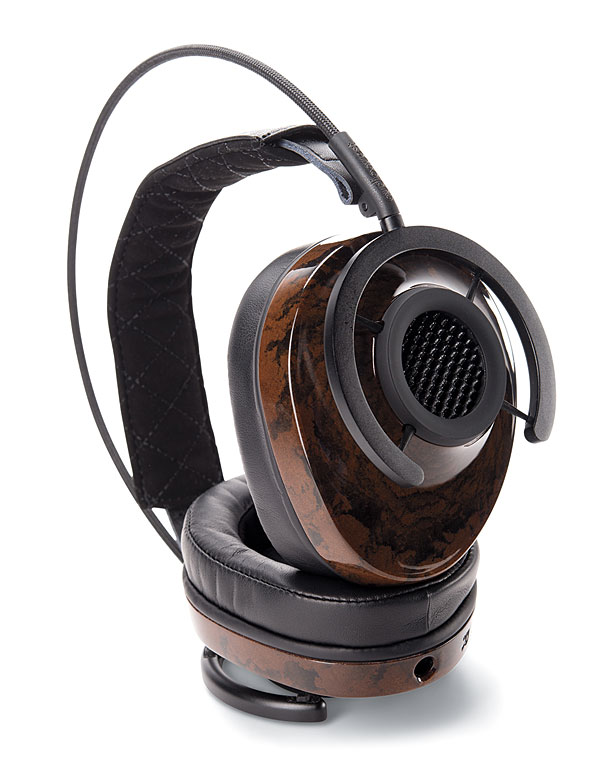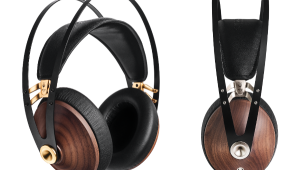AudioQuest NightHawk Headphone Review

AT A GLANCE
Plus
50mm biocellulose drivers
Liquid wood ear cups
Deliciously comfortable
Minus
Cable much too long for portable use
THE VERDICT
NightHawk’s use of sustainable materials, high comfort, and sweet sound bode well for AudioQuest’s debut headphone.
Everything about the AudioQuest NightHawk headphone, from its materials, design, and sound, differs from what came before. Take a gander at those ear cups: They’re made from something called Liquid Wood. Don’t worry, they’re not the least bit squishy or soft. The cups are crafted from sustainable plant fibers that are liquefied and precision injection-molded. Then their insides are elastomer-coated to minimize resonance. The ear cups also feature a 3D-printed grille, inspired by the underlying structure of butterfly wings, and the grilles are said to reduce the cups’ internal reflections.
The NightHawk’s 50mm bio- cellulose driver was designed by AudioQuest’s Skylar Gray with low distortion in mind. Biocellulose sounds very different than more commonly used Mylar and other types of thin-film drivers found in dynamic and planar magnetic headphones, says Gray. I agree, and I’ll have a lot more to say about that later in this review.
The ear cups’ rich finish looks spectacular, and rather than mount the cups on conventional pivoted yokes, the NightHawk’s are suspended by four elastic bands to better conform to any head or ear shape. That’s not just theory—the NightHawk is one of the most comfortable headphones I’ve worn.

It comes packed in a beautifully finished, heavily padded storage case that also contains two 8-foot headphone cables. They’re both terminated with 3.5mm plugs, and you get a silver-plated 6.3mm home adapter plug. I opted for the thicker audiophile-grade cable for most of my listening tests, a scaled-down version of AudioQuest’s high-end Castle Rock speaker cable. That one is for home use, and the thinner, more flexible cable is for portable use. Unfortunately, it’s also 8 feet long, which is much too long; a shorter cable would be a lot easier to manage.
What about the sound? Where other high-end headphones zig, the NightHawk zags. I’ve listened to nearly all of the top contenders, and here’s what I’ve learned: No headphone sounds exactly like real music. I will say this, NightHawk has more lifelike body and soul than most headphones, with no midrange “push” or high-frequency emphasis. On Frank Zappa’s The Yellow Shark album, the strings and winds sound delicious, but the percussion lacks sparkle. The Audeze EL8 open-back headphone restores the percussion’s leading-edge transients, and the soundstage opened up. While that’s great, I missed the NightHawk’s more natural tonality. I like both headphones for different reasons; there’s no clear winner here.

Still, with recordings from sessions I attended, like David Chesky’s Jazz in the New Harmonic, the EL8 did a better job re-creating the sound as I remember it. The low-level detail and room acoustics came through better on the EL8, but at the same time, I preferred the NightHawk’s more satisfying tonality with piano, bass, trumpet, and tenor sax. With singers like Ella Fitzgerald, Beyoncé, and Frank Sinatra, you really hear the way they inhabit a tune, bringing out the meaning of the lyrics and their emotions. I love the way the NightHawk keys into their phrasing and breath control. That’s what separates the best singers from merely competent ones, and the NightHawk brings it out.
Late in the review process, AudioQuest sent a preproduction sample of the NightHawk balanced headphone cable (with a four-pin XLR connector; other balanced connector types will also be offered). I switched between the standard and balanced cables plugged into my Oppo HA-1 headphone amp, and I found the sound with the balanced cable to have a clearer overall presentation and a slightly wider soundstage. If you have a balanced amp, definitely opt for the balanced cable.
The NightHawk is the very first AudioQuest headphone. More are in the works, and they’re all being designed by Skylar Gray. What can I say? He’s off to a great start!




























































